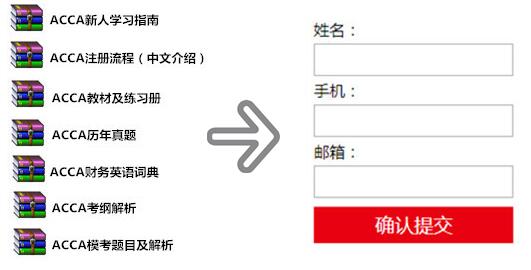ACCA备考必备:2017年6月ACCA考点预测
2017年3月ACCA考试过去了,6月备考的童鞋已经开始了自己的学习计划,金程ACCA给大家网罗了BPP大师预测的6月ACCA考前重点,各位童鞋不妨放宽心来看看!
2017年6月ACCA考点预测
2017年3月ACCA考试过去了,6月备考的童鞋已经开始了自己的学习计划,金程ACCA给大家网罗了BPP大师预测的6月ACCA考前重点,各位童鞋不妨放宽心来看看!

BPP';s JUNE 2017 EXAM TIPS
F5
Q1-3: All areas of the syllabus!
Q4: Planning and operational variances, mix and yield variances, and
evaluation of company performance.
F6
Employment benefits.
Property income.
Relief for pension contributions.
Adjustments to profit to arrive at trading income for both companies and sole traders.
Capital allowance computations.
Likely 10 mark questions on VAT, IHT and CGT.
F7
Q1-2
Interpretation or statement of cash flows.
Consolidation (if Q3 is not a consolidation).
Other possibilities - conceptual framework, intangible/tangible assets and impairment, provisions and contingencies, revenue and grants, financial instruments, discontinued operations/assets held for sale, or earnings per share.
Q3
Financial statement preparation (30-marker).
Single entity or a consolidation (statement of profit or loss and other comprehensive income or/and statement of financial position).
Statement of changes in equity, statement of cash flows extract, earnings per share calculation or linked written topic.
Consolidation including one subsidiary and often an associate, with adjustments, eg fair values, deferred/contingent consideration, PUP on inventories/PPE, intragroup trading and balances, goods/cash in transit.
Single entity preparation from a trail balance or restatement of given financial statement with usual adjustments for depreciation, revaluation and current/deferred tax.
F8
Q1-4
Ethical threats and safeguards.
Corporate governance and internal audit.
Audit planning, materiality, audit procedures (especially substantive procedures), audit finalisation and audit reports.
Q5-6
Audit risk
Internal controls
Audit procedures – substantive procedures and tests of control.
F9
Calculations on improvements to improvements to receivables management – early settlement discounts and factoring.
Weighted average cost of capital calculations – components.
Ration analysis to support financing decisions.
NPV calculations, possibly correcting an incorrect NPV given by the examiner, which includes incorrect tax and inflation calculations.
P1
Read any new articles recently published by the examiner.
Use of stakeholder.
Ethical and other CSR theories applied to scenarios
Use of risk and governance – board directors, remuneration and reporting.
P2
Section A
Preparation of a statement of financial position and/or a group statement of profit of loss, and other comprehensive income or statement of cash flows. This may include foreign subsidiary, discontinued activities, disposals and/or acquisitions. You can add accounting complications to this, such as financial instruments, pensions, share-based payment and impairments.
Accounting adjustment and social/ethical/moral aspects of corporate reporting.
Section B
Q2-3
Deferred tax, foreign currency transactions, financial instruments, pensions, share-based payment, non-current assets (recognition and/or impairment of tangible and intangible assets), borrowing costs, the effect of accounting treatments on earnings per hare or ratios.
Industry-based testing range of standards such as accounting policies and the framework, leases, grants, IFRS for SMEs, reorganisations, provisions, events after reporting period and related parties.
Q4
Current development in corporate reporting and problems with existing standards – revision of the conceptual framework, regulatory issues over adoption and consistent application of IFRSs, implementation issues, application of the definition of control and significant influence (equity accounting), improvement in performance measurement, classification in profit or loss vs OCI, integrated reporting, revenue recognition.
Group accounting.
P3
Integrated reporting will increasingly feature in P3.
Project management.
Times series, relevant costing, decision trees and decision making techniques.
Role of corporate parent, including BCG matric/Ashridge.
Business process change, including the POPIT model and Harmon’s process-strategy matrix.
E-business, e-marketing, and the impact of Big Data on areas like the 7Ps and CRM.
P4
Q1
Project appraisal – domestic and overseas.
Business valuations – cost of capital calculations.
Risk management (hedging).
Q2-4
Risk management – currency or interest rate.
Business re-organisation.
Real options.
Ethics and general financing issues – dividend policy.
P5
Q1
Numerical techniques – KPIs, EVA, transfer pricing, financial reporting measures, analysis of quality related costs, ABC.
Performance management frameworks – building blocks model or balanced scorecard.
Know the difference between evaluating a performance report and evaluating the underlying performance of the organisation.
Q2-4
Quality management – Six Sigma.
Information reporting – CSFs and KPIs, non-financial performance indicators.
HR frameworks – reward & appraisal systems.
Risk management and environmental management accounting.
Performance management frameworks – building blocks, performance pyramid, balanced scorecard.
P6
Groups of companies with overseas aspects.
Unincorporated business particularly loss relief or involving a partnership.
Capital gains tax versus inheritance tax.
Overseas aspects particularly the new rules on residence.
Personal service company.
Company purchase of own shares.
Enterprise investment schemes/venture capital trusts.
Change in accounting date.
VAT partial exemption.
Transfer of trade versus sale of subsidiary.
Disincorporation relief.
Pension contributions.
Patent box, research and development expenditure.
P7
Section A
Planning, risk assessment, evidence gathering and practice management issues.
Non-audit engagement, with the prospective financial information (PFI) or due diligence.
Audit completion or consolidated groups.
Section B
Audit evidence and financial reporting issues.
Practice management, including ethics and quality control.
Reporting issues, including completion and communication.
填写资料领取ACCA考试资料


 课程
课程 题库
题库 直播
直播 代报名
代报名 微信
微信

 资料索取
资料索取  代理报名
代理报名  课程咨询
课程咨询  400-700-9596
400-700-9596